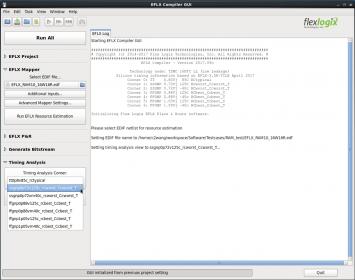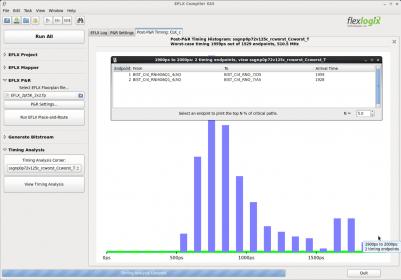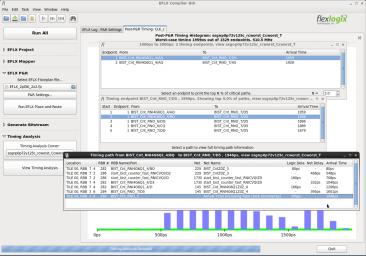The initial project planning for an SoC design project faces a difficult engineering decision with regards to the “margin” that should be included as part of timing closure. For cell-based blocks, the delay calculation algorithms within the static timing analysis (STA) flow utilize various assumptions to replace a complex RC interconnect load after routing and parasitic extraction with an effective capacitance for gate delay modeling. The library characterization data is then used to launch an (effective) waveform at the gate output to calculate the arrival times and slews at the RC network fanout pins. These calculations have an implicit error tolerance that is incorporated into the margins added to the STA flow path delay histograms.
The other day, I was having coffee with Geoff Tate and Cheng Wang from Flex Logix Technologies, providers of embedded FPGA IP on leading process nodes. Naively, I asked what guidelines Flex Logix provides to their customers, in terms of timing margins for the delay calculator and STA reporting features of their eFLEX compiler.
Cheng smiled, and said, “We do not have to provide margins. The reported path timing will accurately reflect what the customers will ultimately measure in silicon.”
He could tell that I looked a little puzzled.
Cheng continued,“An embedded FPGA implementation is different than a typical SoC block physical design. Yes, both approaches utilize a synthesis flow to a target library, followed by placement and routing steps. Yet, whereas timing analysis for the cell-based block has the challenge of modeling the interconnect load for a general fanout network, all the interconnects in an eFPGA are pre-defined. We invest significant resource to accurately characterize all elements of the eFPGA fabric to determine their signal delays and arrival slews — the LUT cells, all the route segments, the logic switches. And, then we confirm those models during our silicon qualification. The accuracy of the timing reports for a customer design is built-in, due to the extensive characterization data that is directly applicable.”
I finally got it. The building blocks of the eFPGA enable detailed characterization to be completed prior to customer release.
“So, how does an eFPGA customer run STA?”, I asked.
Cheng replied,“The eFLEX customer will follow a familiar flow as they have used for a general SoC block. A set of timing constraints are input, to define clocks and operating modes. A multi-corner, multi-mode (MCMM) set of scenarios is defined.” (see the figure below)

Geoff added, “The eFLEX compiler exercises synthesis, place, and route for the highest priority MCMM setting, to achieve the optimum implementation. The compiler provides STA path timing results for all the MCMM scenarios.”
“Given the pre-qualified characterization detail, STA is simplified to summation of individual circuit and net segment delays, once switch assignment and routing are complete. eFLEX uses a path-based delay propagation algorithm.”, Cheng described. “And, as clock arrival skews are also accurately characterized, any necessary hold time corrections by LUT delay insertion are applied judiciously. As the clock routes in the eFPGA fabric are highly optimized, very little functional delay path padding is typically required, perhaps in DFT scan mode.”
Geoff and Cheng shared some example screen shots of the STA results from the eFLEX compiler. The figures below depict a path delay histogram, and upon selecting a specific path, the detailed breakdown of its individual delay contributions.


There was one caveat that Geoff and Cheng shared.“Recall that an eFPGA design recommendation is to register the I/O signals. Whereas a general SoC block designer may invest significant effort in time budgeting and constraint file settings for inter-block paths, that is not the focus for out customers. They are seeking accurate, predictable register-to-register path timing for the functionality implemented in the programmable eFPGA logic.”
eFPGA IP is certainly unique. The detailed characterization of all the fabric elements enables accurate path timing analysis results, and eliminates the need to allocate significant timing margins
For more information on the Flex Logix eFLEX compiler and the path timing analysis features, please follow this link.
-chipguy
Share this post via:





Comments
One Reply to “Timing Analysis for Embedded FPGA’s”
You must register or log in to view/post comments.